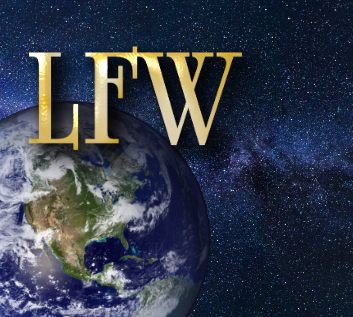"Dark Energy", A Clean Sky and Personal Flying Vehicles May 27, 2007 In a previous column, “How Personal Flying Vehicles Will Change Society”, I wrote about the idea that personal flying vehicles could use some type of “antigravity” solution to stay aloft. This was based on my layman’s view (for I am not a scientist) that the first priority of a personal flying vehicle (PFV) is to not fall down and go “boom”. It was thus with great interest that I read an article in the May 27, 2007 issue of Parade magazine, called “The Secrets of Dark Energy”, by Meg Urry. Professor Urry is scheduled to become the chair of the Department of Physics at Yale University in July, 2007. In writing about the scientific view that the expansion of the universe is slowing down because of the pull of gravity, she stated:
She goes on to say:
Taking the view that if we can harness one form of invisible energy, such as radio waves, we can discover how to harness another, I believe that it’s only a matter of time before some brilliant scientist discovers how to use the power of dark energy as an antigravity propulsion system for personal flying vehicles. Scientific breakthroughs are being achieved at an exponentially accelerating rate, so is it possible that we’ll be using PFVs before the end of the century? I believe that we will. Which brings us to the issue of environmental impact. One day over lunch, while my family and I were discussing the possibility of PFVs, my wife and daughter raised the issue of “sky pollution”. It was their view that a sky filled with hundreds or thousands of PFVs would be an ugly sight to behold. They said that even in the midst of an unpleasant environment on the ground, at least one could look up at a clean and beautiful sky (unless you’re in a smog filled city -- but that’s another column). Since their logic seemed irrefutable, we started talking about solutions. One idea that came out of our discussion was that PFVs could operate under altitude restrictions that changed based on where the PFV was operating. My previous article (mentioned above) took the view that PFVs would almost completely eliminate asphalt. Huge parking lots and road systems, made up of miles upon miles of asphalt, is not a pleasant sight to behold and will no longer be needed when PFVs replace ground-based vehicles. This benefit of PFVs is significant, because restoring the beauty of our environment will have a huge impact on the emotional health of humankind. In populated areas, where the sky view needed to be kept extra clean, PFVs would fly just a few feet above the ground, using our current system of local roads. However, because they wouldn’t be touching the ground, the asphalt on the roads would be replaced with grass and wild flowers. The roads could be marked by signposts, or by trees, in the way that some Italian country roads are lined by tall trees on both sides. Parking lots would be replaced by vertical parking towers, allowing the unused areas of the parking lots to be converted to parks. Let me emphasize here that vertical parking towers do not need to be hideous in their appearance. When the PFVs needed to travel as the crow flies, outside of the local road system, they could fly above the tree tops, using specified routes, to keep the rest of the sky clean. They would need to fly high enough above the trees to not disturb birds, but low enough to preserve a clean sky. Flying above the tree tops in this manner would mandate that the antigravity propulsion system of PFVs would be completely silent and emission free. For very long distances, such as a trip across many states, our current system of highways could be preserved, but with the asphalt replaced with grass and wild flowers. If the PFVs had the capability to attain high altitudes, flight paths could be designated, so that sky views could be kept as clean as possible. I have mentioned wild flowers as a complement to grass because of their beauty and their low maintenance. The Department of Transportation in Virginia already plants wild flowers along many of the highways, to great effect. One might ask why I’m writing about personal flying vehicles, since I’m not a scientist or a transportation expert. Shouldn’t we leave these ideas and issues to the professionals who might implement them in the future? Certainly the implementation will be done by experts. Yet, it is all of us, as citizens, who will be affected by PFV technology. Will the technological experts who create the infrastructure for PFVs pay enough attention to issues such as quality of life, environmental preservation and the beauty of our surroundings? It is up to us to insist that they do. So far, our record hasn’t been that good. The automobile revolution has made life more convenient, but it has also done serious harm to the environment. Paradise is being paved over every day, and greenhouse gas emissions are increasing. We have to make sure that the next great transportation revolution, based on PFVs, will enhance the beauty of our world, instead of damaging it. More than anything, this requires a strong consensus of citizens everywhere that environmental beauty and preservation are not optional when it comes to the implementation of PFV systems. We have the right and the responsibility to politely demand that our politicians and scientists “make it so”. (Comments are moderated and must be approved.) “The Epiphany of Zebediah Clump”
Watch our first film right here. |










